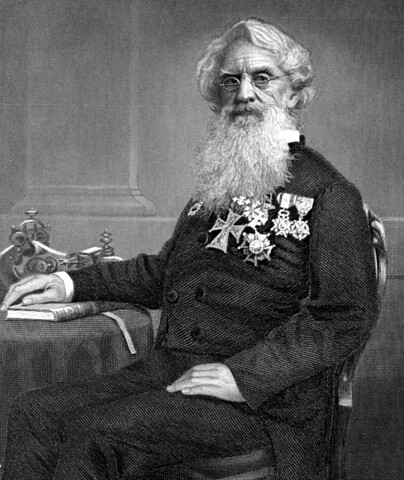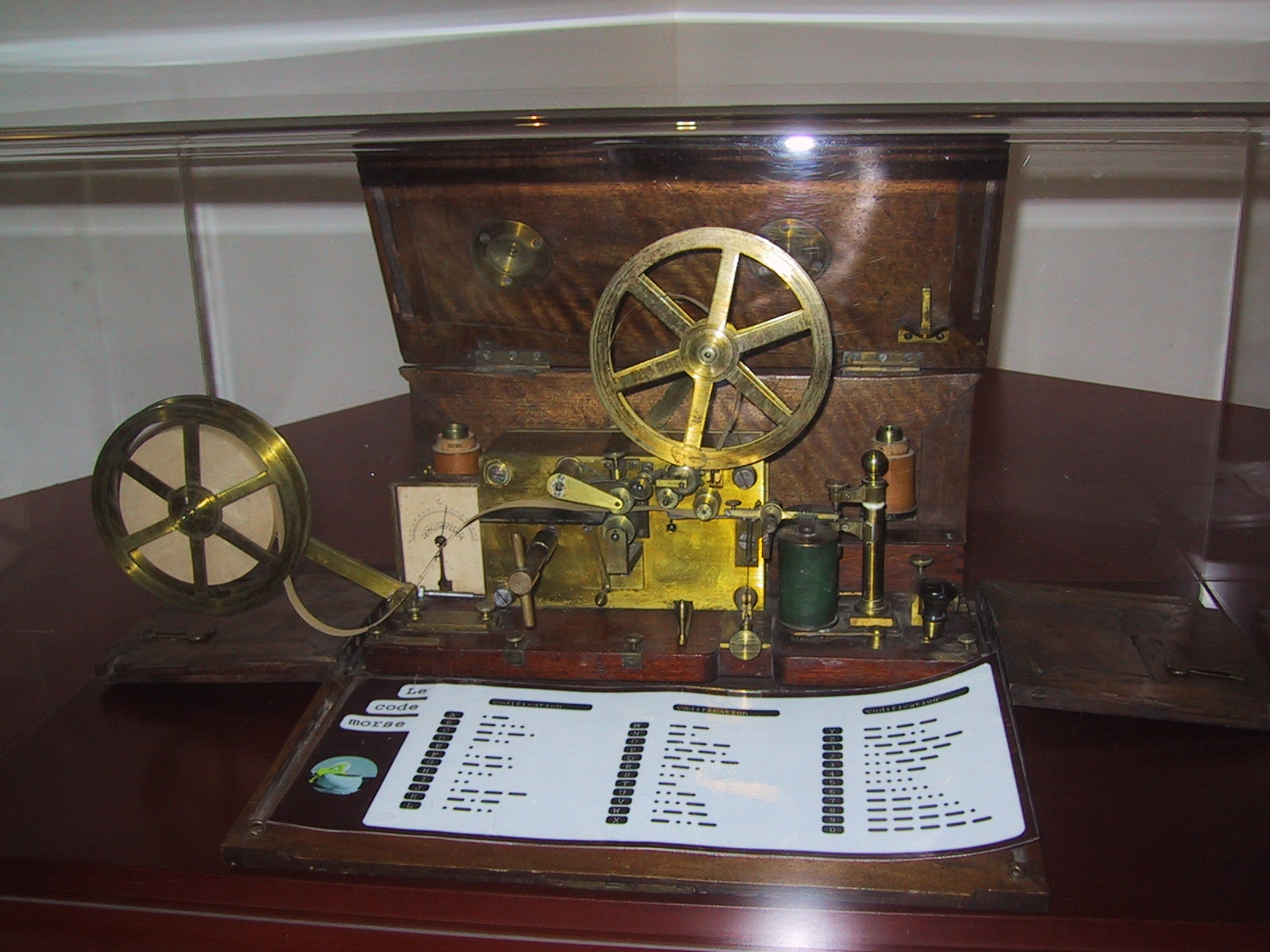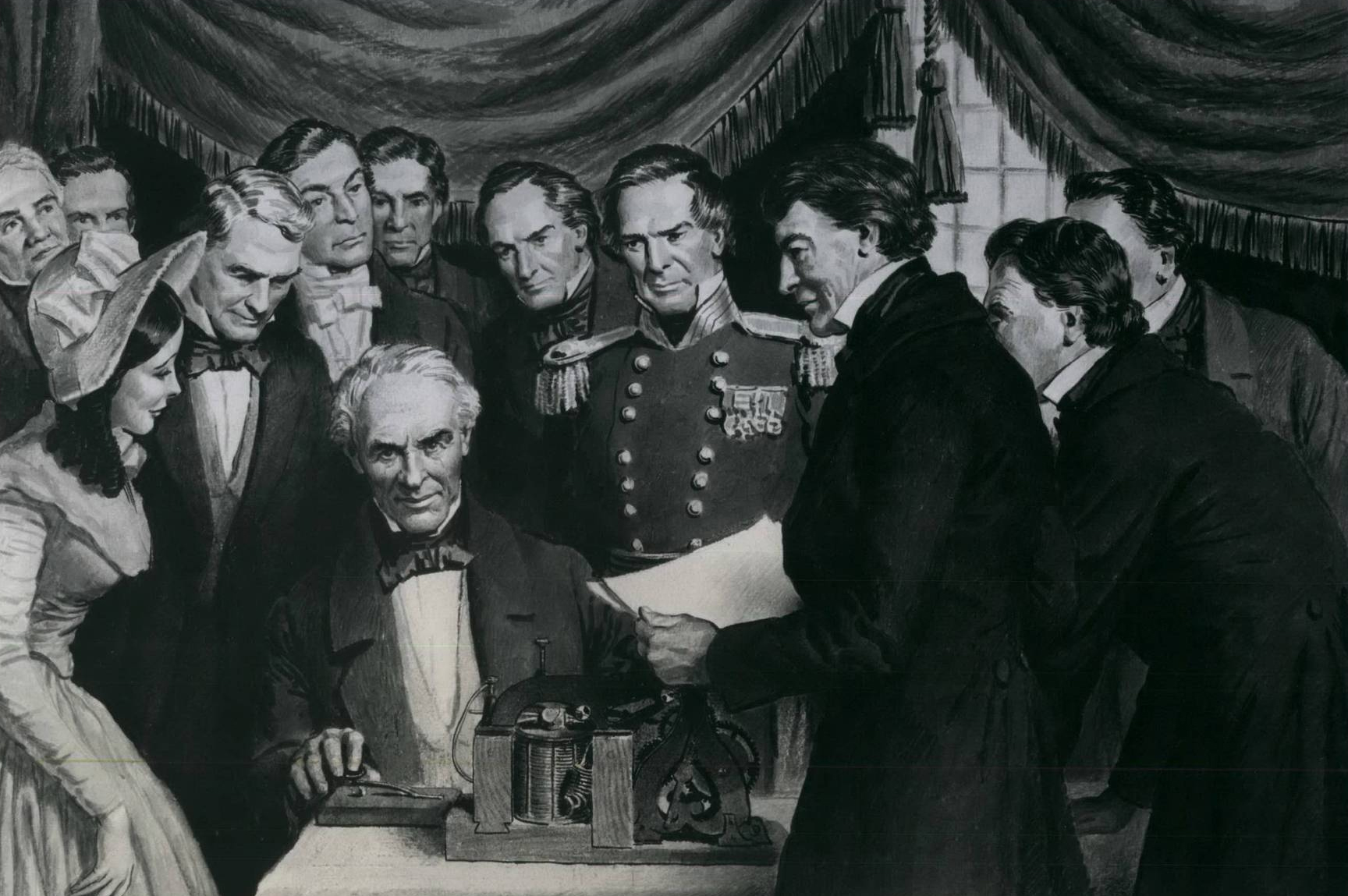Samuel F. B. Morse was born in Charlestown, Massachusetts, the first child of the pastor Jedidiah Morse (1761–1826), who was also a geographer, and his wife Elizabeth Ann Finley Breese (1766–1828). His father was a great preacher of the Calvinist faith and supporter of the Federalist Party. After attending Phillips Academy in Andover, Massachusetts, Samuel Morse went on to Yale College to study religious philosophy, mathematics, and science. While at Yale, he attended lectures on electricity from Benjamin Silliman and Jeremiah Day and was a member of the Society of Brothers in Unity. He supported himself by painting. In 1810, he graduated from Yale with Phi Beta Kappa honors.
After graduating from Yale in 1810, Morse became a clerk for a Boston book publisher. But painting continued to be his main interest, and in 1811 his parents helped him go to England in order to study that art with American painter Washington Allston.Like the majority of Americans of his time, however, he accepted English artistic standards, including the “historical” style of painting—the Romantic portrayal of legends and historical events with personalities gracing the foreground in grand poses and brilliant colours.

While returning by ship from Europe in 1832, Morse encountered Charles Thomas Jackson of Boston, a man who was well schooled in electromagnetism. Witnessing various experiments with Jackson’s electromagnet, Morse developed the concept of a single-wire telegraph. He set aside his painting, The Gallery of the Louvre. The original Morse telegraph, submitted with his patent application, is part of the collections of the National Museum of American History at the Smithsonian Institution. In time, the Morse code that he developed would become the primary language of telegraphy in the world. It is still the standard for rhythmic transmission of data.
Even during Morse’s own lifetime, the world was much changed by the telegraph. In the decades after his death in 1872, his fame as an inventor was obscured by the invention of the telephone, radio, television, and the Internet, while his reputation as an artist has grown.

The number of Morse telegraphic operators has decreased sharply, but his memory is perpetuated by the Morse Telegraph Club (1942), an association dedicated to the history of telegraphy. His 1837 telegraph instrument is preserved by the Smithsonian Institution’s National Museum of American History in Washington, D.C., while his estate, Locust Grove, is now designated a national historic landmark.
According to britannica.com; en.wikipedia.org. Source of photos: internet







![[HONORARY PROFESSOR OF RECORD FOR PRACTICE AND EMPIRICAL RESULTS – 2024] RECORD HOLDER CHU BAO QUE (BAC GIANG PROVINCE, VIETNAM)](https://uskings.us/wp-content/uploads/2024/05/IMG_0386-218x150.jpg)
